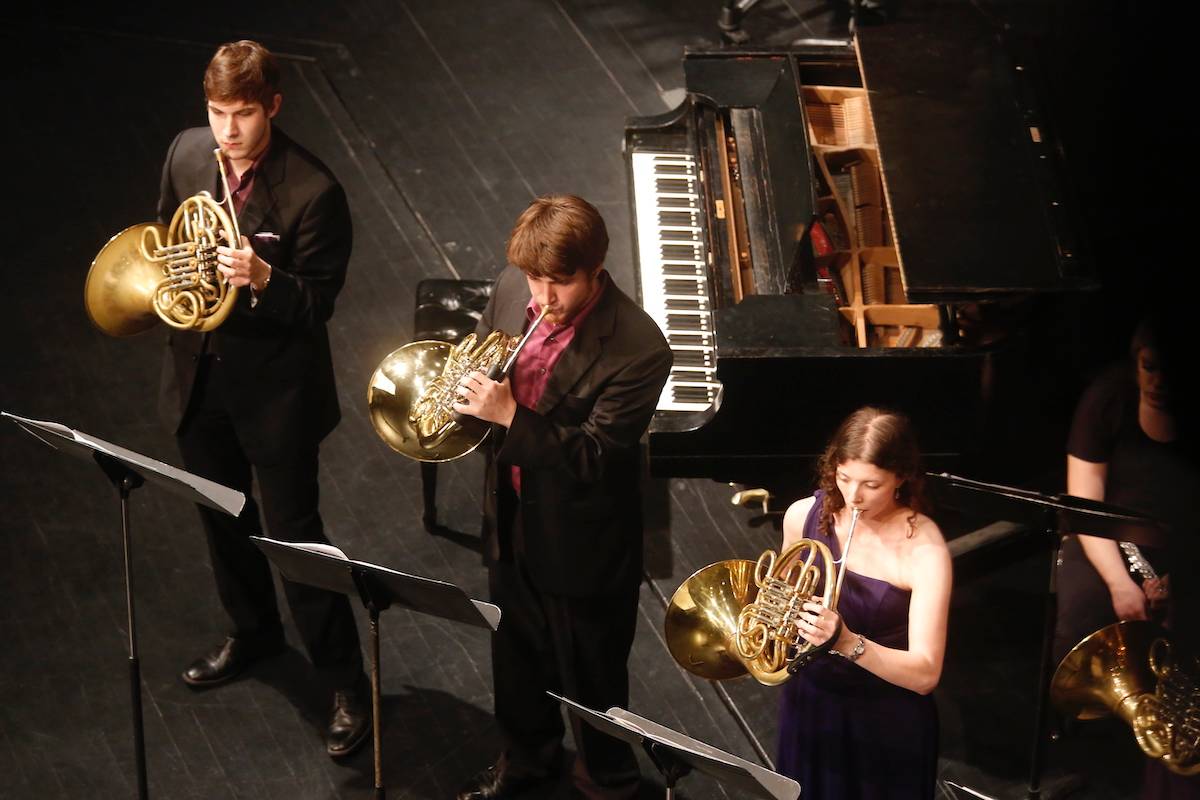Arts at Wichita State University benefit the city and state in ways that range from tourism to education to mental wellness.
People enjoy the university's arts and culture community when they visit the Ulrich Museum of Art and benefit when a child participates in a class taught by Wichita State graduates. The Wichita Symphony Orchestra is staffed by many Wichita State professors and alumni, another example of the numerous interactions between the university and community.
It’s this impact on the community that Wichita State's Center for Economic Development and Business Research (CEDBR), part of the W. Frank Barton School of Business, is attempting to measure in its Arts and Culture Impact Analysis for 2021. The study is part of the CEDBR's series of studies that demonstrate how the university drives the local and state economy. The series started last year with a look at the university's overall impact and will continue next year with a study of athletics.
The study targets three areas – infrastructure, social and cultural benefits, and market transactions – to demonstrate how the university is a part of the state's art and culture environment. It found that the total employment impact of arts and culture was 351 jobs in 2020. The impact of the arts community also includes 590 volunteer events, 7,394 volunteer hours and an attendance of 57,000 people at events.
"The arts culture is ingrained in this community and in some ways people don't recognize," said Jeremy Hill, director of the CEDBR. "They create amenities that we don't see, but improve our quality of life."
- Wichita State contributes to the arts and culture infrastructure by supplying labor and engaging with the business community. That knowledge transfer benefits people of all ages as those students broaden society's understanding and appreciation for intangible things like expression, self-identity and aesthetics.
- Wichita State benefits from a deep business and community engagement by analyzing, collecting and leading arts and culture-related activities. Those engagements help further advance their craft and understanding of a dynamically evolving culture.
- Wichita State contributes social benefits with the School of Music, KMUW, the School of Performing Arts and other entities that foster creativity and preserve cultural events.
- Wichita State creates market transactions by driving tourism, creating business and employment, and sparking entrepreneurs.
Hill said the arts and culture impact study is breaking ground among universities. Most studies, he said, focus on market transactions and ignore the qualitative measure of social and cultural benefits. The CEDBR used surveys of divisions within the university to help document impact.
“Other university research has tended to focus on the easily identifiable market transaction like ticket sales; however, that work overlooks the sometimes more meaningful values of the university engagement,” he said. “Even though it is not written into the job description, professors live within the community and engage society, which tends to create the highly desirable ‘college environment.’ Art and cultural professors and staff are even more quintessential to this notion, as their craft spills over into the community.”
The study also documents the impact of arts and culture on quality-of-life aspects such as mental health and producing a creative workforce.
“Our mission is trifold – economic, education and culture,” Dr. Kaye Monk-Morgan, vice president for strategic engagement and planning at Wichita State. “That culture piece of being a community where people want to live, thrive and grow is important. The work we do in that area is really important.”


 File photo
File photo